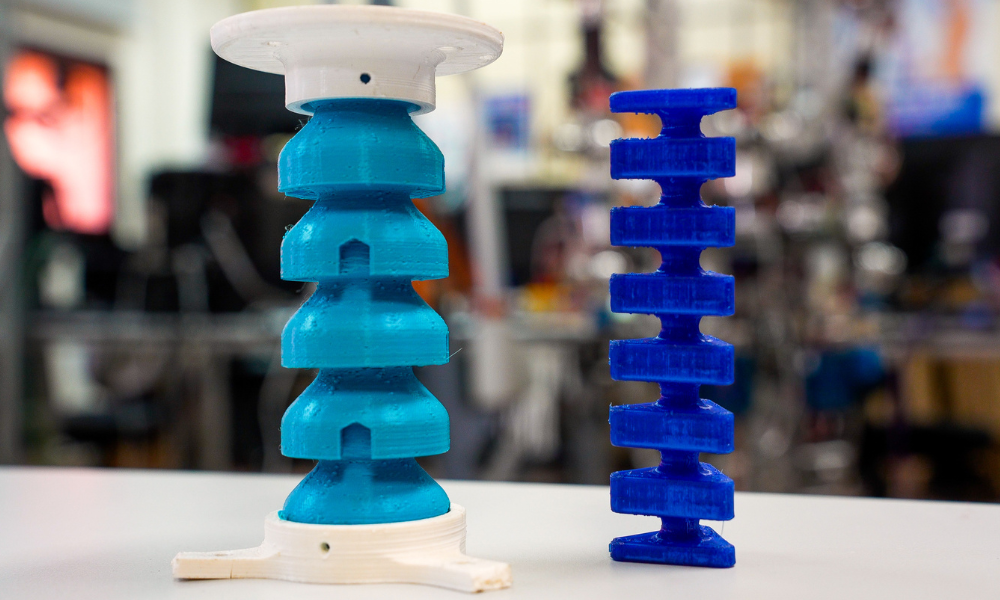Researchers at Universidad Carlos III de Madrid (UC3M) created a novel soft joint model for robots with an asymmetrical triangular shape and an incredibly thin central column. This innovation, which was just patented, will significantly impact the robotics industry and enable flexibility, safety, and adaptability in movement.
 Photo of the patented soft joint. Image Credit: Universidad Carlos III de Madrid
Photo of the patented soft joint. Image Credit: Universidad Carlos III de Madrid
The main feature of this new design is that it allows greater bending angles to be achieved with less force, providing the robots with great versatility and adaptability of movement. In addition, by introducing asymmetry in the design, the joint is structurally blocked when bending limits imposed by the design itself are reached, which prevents the joint material from breaking or exceeding its elastic limit and provides greater operational protection for the robots.
Concha Monje, Professor, Department of Systems Engineering and Automation, Universidad Carlos III de Madrid
Concha Monje is the principal researcher of the SOFIA Project.
As part of the safety theme, the researcher notes that the joint's flexible material makes it easier for the robots to absorb any impacts they may cause while performing their tasks, increasing the safety of their interactions with people. This flexibility also makes it possible to conduct operations in cramped spaces or situations that call for more workplace flexibility.
And that's not all: this type of joint can function as an independent actuation module or connected with other joint modules to form a highly functional robotic handling chain.
Concha Monje, Professor, Department of Systems Engineering and Automation, Universidad Carlos III de Madrid
Another feature of the soft joint's mathematical model is its ability to bend with a constant curvature. This makes creating control systems that operate reliably while using little computing power easier.
The researcher concludes by pointing out that the joint can be produced quickly and affordably using standard 3D printers and elastic materials without significant financial investment.
The UC3M RoboticsLab team is currently working on a robotic claw with a patented joint design in its fingers. The various contact surfaces that the robotic arm can make contact with to achieve this grip enable it to grasp objects with a high degree of dexterity.
¡Revolución en robótica! La UC3M patenta una articulación blanda más adaptable y segura
Video Credit: Universidad Carlos III de Madrid